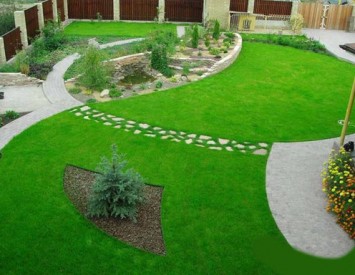It would seem, what care is necessary for a regular lawn? The grass grows in a forest belt without any care ... But, it turns out, it is not so easy to grow and preserve green juicy grass.
The lawn must be correctly prepared for winter. Moreover, it also needs to be removed from the state of wintering. So, let's understand.
Types of lawns
By the method of creation
- Rolling lawn. For the winter it is simply twisted into a roll and preserved in a special room, subject to certain conditions. But care for such a lawn implies the involvement of workers of specialized companies, which will properly and professionally prepare it for winter. It is better not to try to do it yourself so that the roll lawn does not disappear in winter as a result of improper storage or non -compliance with the desired temperature regime.
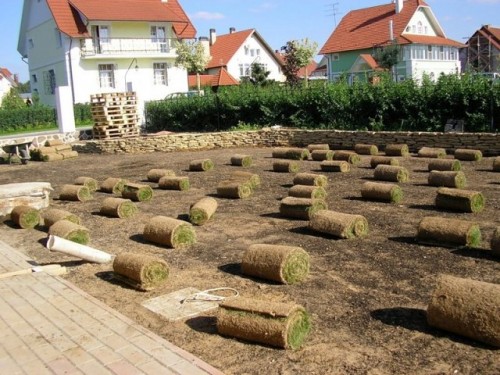
- Sowing lawn. This type of lawn is usually created by sowing the site with a mixture of herbal seeds. You can take care of such a green island independently, following some rules. We will tell you more about how to save just such a lawn in winter.
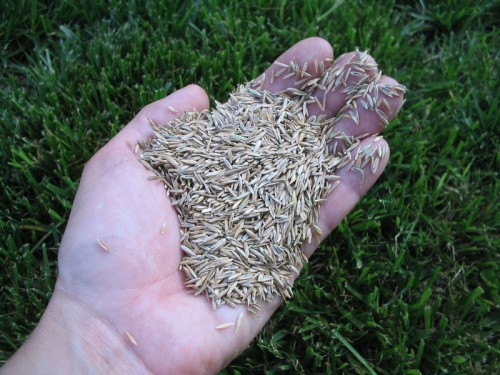
The main cultures that are used to create a lawn
- Bluegrass.
- Raigrass.
- Oatmeal, etc.
By purpose, location and external features
- Ordinary lawn. It can be located anywhere, intended for nature rest. This is an ordinary lawn, not ideal in aesthetic plan, but not whimsical. On such a lawn, you can walk barefoot without afraid to damage it.
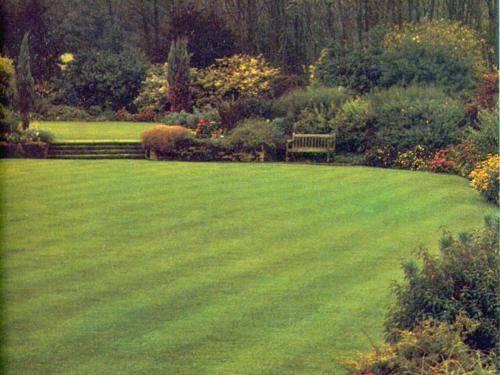
- Stall lawn. This is an extra-class lawn with soft thick grass, created with a purely decorative goal. Such a green carpet is located, as a rule, in the facade. You can’t walk on such lawns.
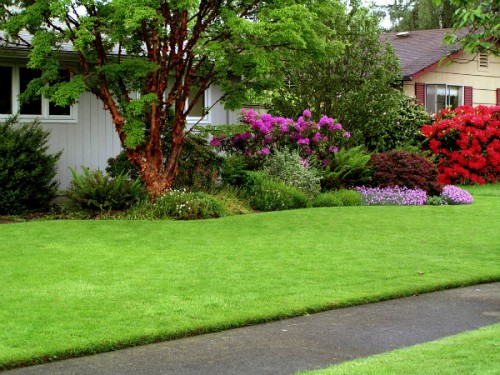
- Sports lawn. The purpose of this type of lawn is the creation of a comfortable site for outdoor activities and sports. It is created according to a special technology, resistant to trampling and other adverse effects.
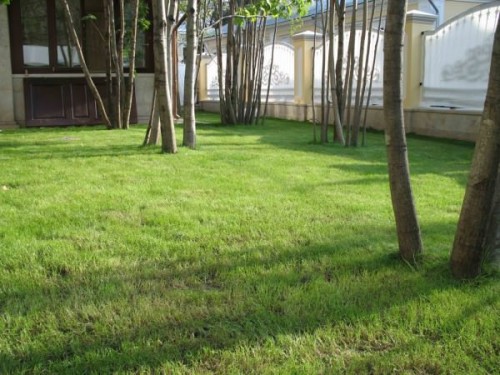
- Mauritan lawn. These are flowering lawns with forget -me -nots, clover and poppies, combined with alpine slides and are usually located around an artificial reservoir.
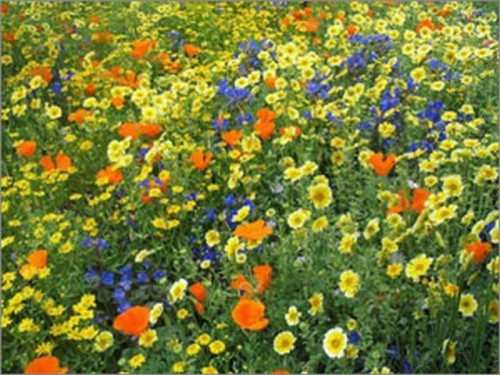
Problems that may occur with improper care of the lawn
- Snow mold. The perpetrators of such a common damage to lawns in the form of gray-white spots of various shapes are fungi Fusarium. The ideal environment for their reproduction is snowdrifts on the lawn.
- Troubles. The reason for the appearance of yellow “bald patches” from rotten grass on the lawn is the fallen leaves left for the winter, as well as the ice crust formed in the frost.
- Chemical burns. Yellow spots of dead grass in the middle of a green massif. The source of their appearance is usually not dissolved fertilizer capsules (after top dressing, you need to thoroughly water the lawn). In the spring, new grass will have to be sowing to these places. It is advisable to sow the same seeds that they were originally used so that the grown grass does not stand out against the general background. In autumn, such yellow bald spots should be filled with a mixture of compost with a sand layer of 2-3 cm.
Events for the preparation of the lawn for winter
This stage must be carried out before the first frosts. In the middle lane, this time usually coincides with the end of October.
- Garbage cleaning.Many claim that this is superfluous. Allegedly, fallen leaves are a kind of protective veil in winter cold. However, the leaves remaining in the fall create conditions ideal for the decay process. As a result, the lawn after winter is covered with bald spots, which will not add aesthetic attractiveness to it. Therefore, do not neglect this important stage, preparing the lawn for "hibernation".
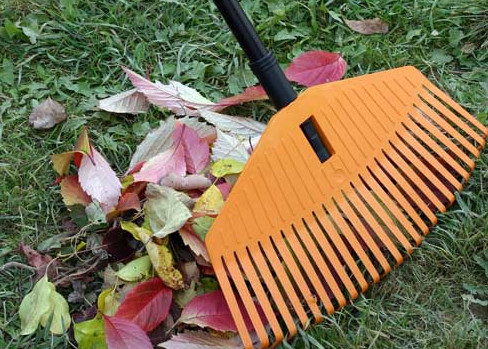
- Haircut.The last haircut should be carried out before the first frosts with the expectation that the grass will grow to 10 cm until the snow falls. In practice, it is difficult to catch the right moment. Therefore, cut the lawn as it grows, leaving the grass at least 5 cm high.
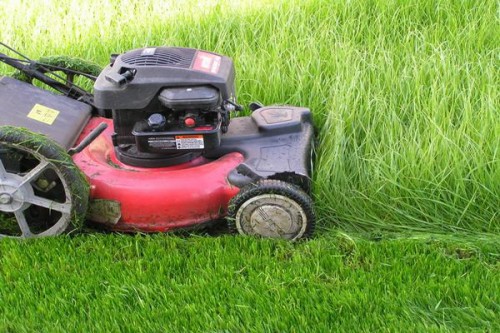
- Watering.Here, too, you need to focus on the real humidity of the environment. If the fall turned out to be rainy, then it makes no sense to water the lawn before wintering. If, on the contrary, arid, then before the conservation of the watering system, you can moisturize the soil for the last time.

- Feeding and treatment against pests. Fulgicides are drugs against snow mold. Potassium fertilizers - this top dressing will ensure the care of the lawn in winter, becoming a kind of amplifier of the immunity of herbal plants. After top dressing, you need to water the lawn to dissolve the granules. In the opposite case, not dissolved capsules of substances can cause a chemical burn (grass becomes yellow and dies).
- Aeration of the lawn. In simple words, this event is aimed at saturating the soil with air and simplifying oxygen access to the roots of lawn grass. In practice, this is achieved by piercing the lawn with a pitchfork to the depths of the teeth and a slight lift of the soil. Such punctures must be done with an interval of 30-40 cm. A few days after that it is necessary to leave the lawn alone (do not walk on it).
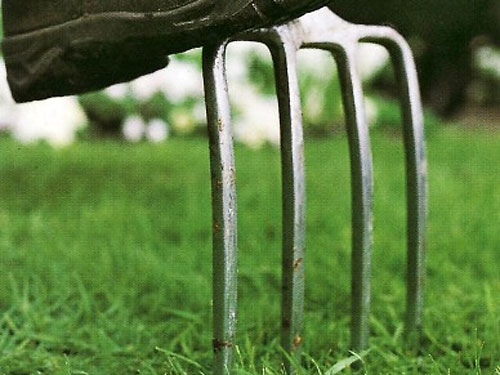
- Creating a protective coating.Such a layer usually consists of a mixture of peat and dry compost, which will serve as an additional feeding tool for exhausted soil. This procedure should be performed before frost.
Important!
- Do not go on the lawn during the period when the first frosts have already come, and the snow has not yet fallen to avoid damage to sleeping buds. This can only be done when the snowy pose reaches a depth of 15-20 cm. This also applies to periods of prolonged rains, when the soil soaks.
- Always break the ice nast that can appear during thaws in winter. So will be provided with free air access to the grass.
- Do not make an ice rink and ice slides at the site of the lawn.
- During cleaning of garden paths, do not dump the snow on the lawn. If there is no other place for this, then take care of cleaning snow during the thaw.
Lawn care after winter
- Top dressing. Spring fertilizers should, in addition to phosphate-potassium components, contain nitrogen, which improve plant vegetation. Carry out in the evening, during the period of established heat, then carefully pour the lawn to dissolve fertilizer capsules.
- "Combning" . Removing dead parts of grass must be carried out after 1-2 weeks, to prevent the occurrence of plant diseases. In places of stagnation of water, aeration measures should be taken similar to autumn.
- Weed fighting . If the site is small, this operation can be performed manually. If we are talking about an extensive lawn, then you should give preference to the use of selective herbicides. These substances are able to destroy weeds without damaging lawn grass.
- Restoration of the lawn . The bald areas must be sown with new seeds, to be compacted and watered.
Treat your love with love, take care of it with due attention, and it will pay you with fresh green grass in the spring and summer.
